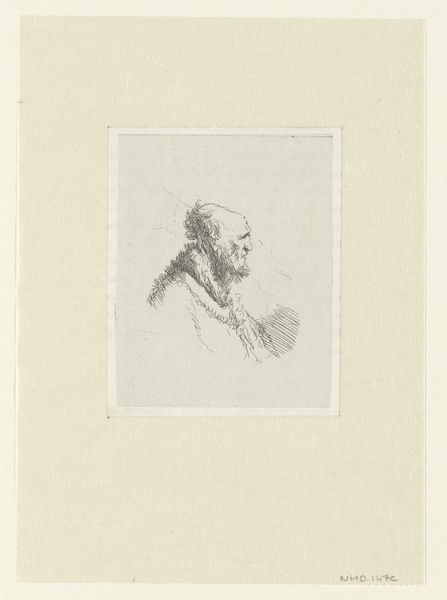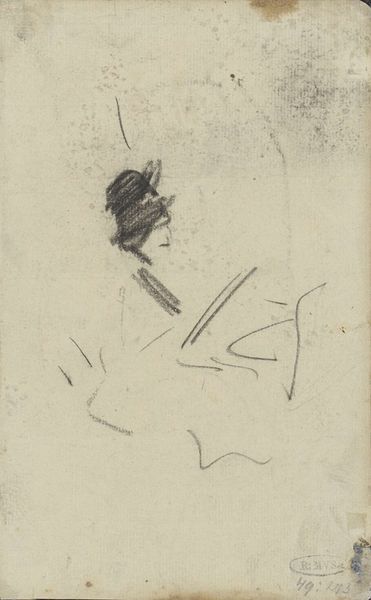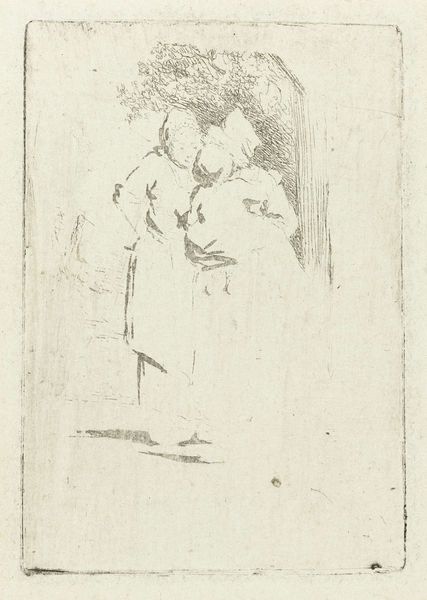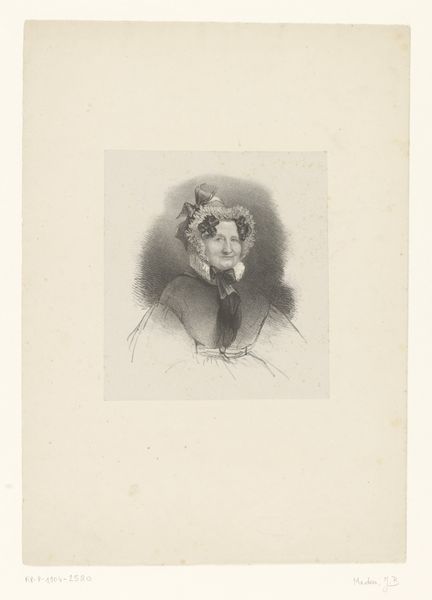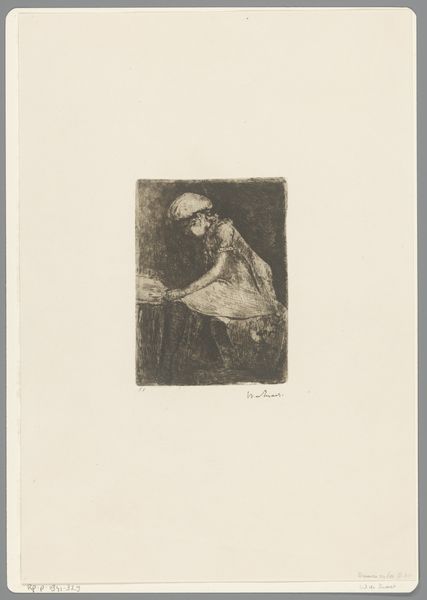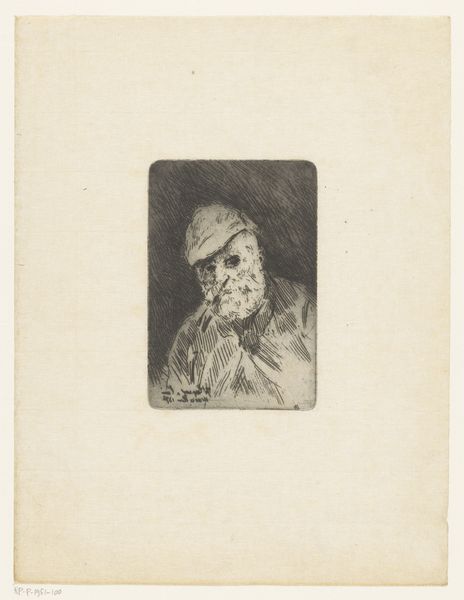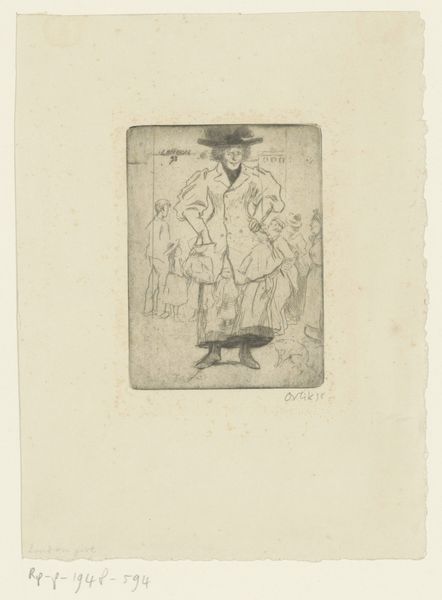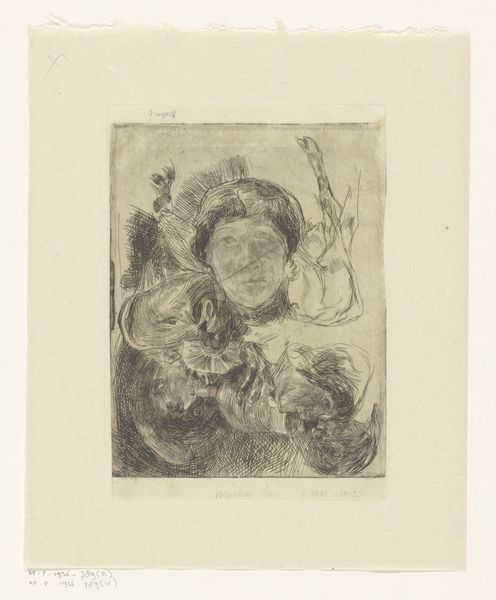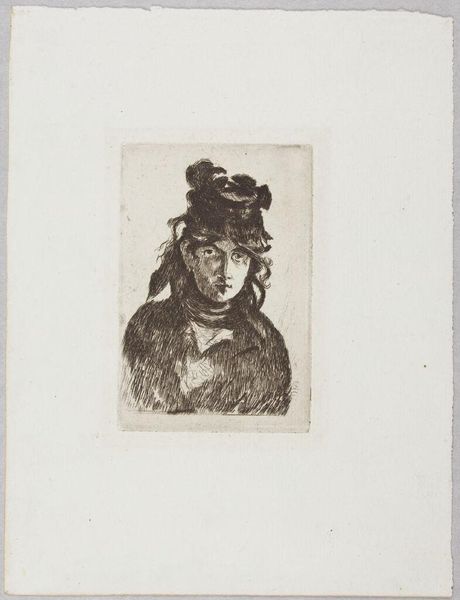
Dimensions: height 33 mm, width 27 mm
Copyright: Rijks Museum: Open Domain
This tiny etching, "Tiroler man in een berglandschap," was made by Joseph Hartogensis. The medium is crucial to its effect. Hartogensis would have coated a metal plate with a waxy, acid-resistant ground, then drawn this composition with a sharp needle, exposing the metal beneath. Immersing the plate in acid would bite away the lines, allowing for the transfer of ink onto paper, capturing the details of the man's hat, beard, and pipe, as well as the mountain landscape. Etching allows for intricate detail and texture. The lines vary in thickness and depth, creating a sense of depth and shadow that brings the figure to life. Unlike painting or sculpture, the marks are inscribed, giving the image a sense of immediacy and precision. The etching technique itself has a social history. Its development in the 16th century was closely linked to the rise of print culture and the ability to disseminate images widely. In this case, the etching captures a romantic vision of rural life, one that could be easily reproduced and consumed by urban audiences. By considering its making, we can appreciate how this small artwork engages with broader histories of both artistic practice and social representation.
Comments
No comments
Be the first to comment and join the conversation on the ultimate creative platform.
